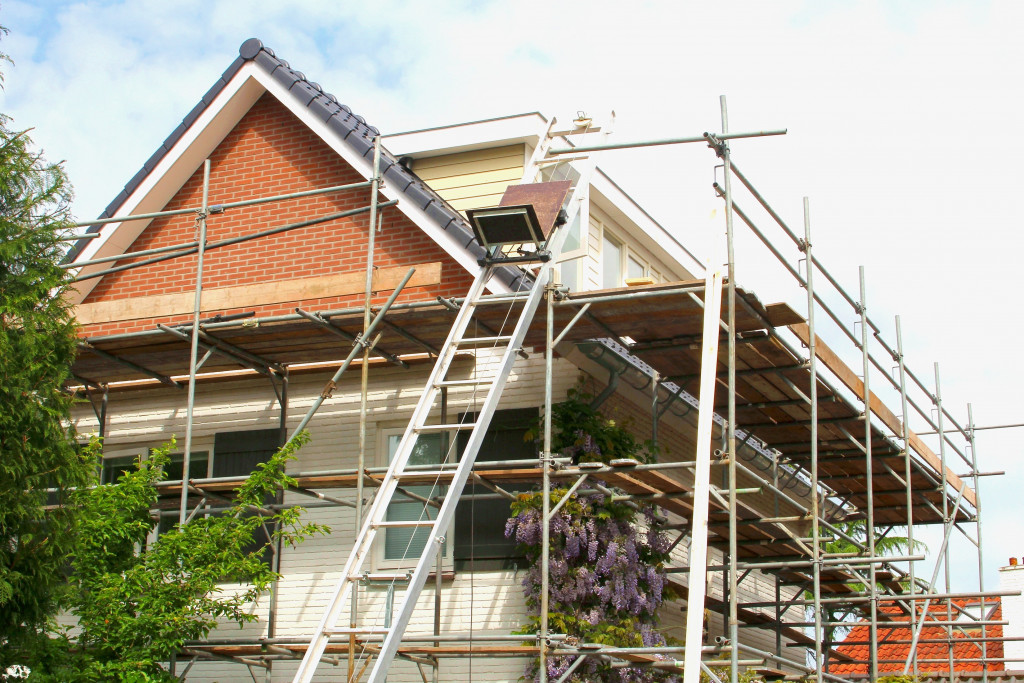Old is a relative term to describe houses. To put things at a more technical perspective, a house built in 1920 or earlier could be categorized as being antique, whereas those built in the 20th century are newer. But, just because a house is old does not mean it is badly built either. A hundred-year-old house could have been built with the sturdiest foundation that’s been tested through the years just like how modern, mass-produced houses could be made of substandard materials.
That said, you do not necessarily have to leave old houses out of your options when scouting for a house to move into. You only need to know the trade-offs involved, in other words, the imminent damage given the worn-out condition of several parts of the house. Besides, to guide you if the house is good enough for what it is worth, you also have to know roughly how much you need to spend to repair the house.
Here are some pointers to help you:
Roof
The roof is perhaps your house’s most important line of defense against the elements. There are various methods when building a roof, but you can never do without shingles or metal panels, rafters, gutters, and soffits. Either of these components sustaining damage could immediately lead to water, pests, and even wild animals entering your home.
Other than leaks, this will manifest through mold growth and watermarks on your soffits and ceiling. Minor damages such as dilapidated gutters and misplaced shingles could be remedied with DIY work, but major ones that would require the roof to be repaired or replaced could cost as much as over $7,000.
Foundation
You can gauge the quality of an old house’s foundation by how many cracks there are on walls. Doors and windows that would no longer close and uneven flooring are also good indicators of a foundation that has already deteriorated or was not built well in the first place. Depending on how bad the house’s condition has gotten, repairing its foundation could cost up to $4,000.

Electrical System
Replacing a house’s electrical system is important because newer ones are engineered for enhanced safety and functionality. It is worth noting that houses whose electrical systems are over 60 years old have only ten more years left in their economic life, and so you will eventually have to shoulder the cost of rewiring works which is roughly around $1,000. If you can see yourself living in the house well into your retirement years, know that the circuit breakers will need to be replaced every 30 years.
While you’re at it, it is best to consult your contractor on how to enable your electrical system for smart technology integration. This will cost you a significant amount upfront but, otherwise, will guarantee you a lifetime of savings because of the energy efficiency and convenience of smart appliances. Besides, your trusted mortgage company might incentivize such an initiative through payment discounts.
Air and Water Filters
Air quality has drastically changed through the years. That means you might need to shell out a big amount on air filtration system installation if the house doesn’t have it yet. And if it does, having filters inspected and replaced accordingly is one more to add to your list before moving in.
One more thing to look out for in old houses is that they tend to retain hazardous gases and chemicals. One common example is radon, which is a byproduct of uranium found in foundation soil. Another is lead and asbestos which were mixed into paint and other industrial materials back in the day. Installing filtration systems to prevent poisoning in your household could rack up to $5,000.
Termites
It takes only a matter of eight years until a termite-infested house is destroyed and the hard part is you could hardly suspect their massive numbers because they are hardly visible aside from the soil trails they build. Sadly, there is no way to completely exterminate their colonies, and buying an old house should mean that you’re willing to co-exist with them.
You can hire pest control contractors, though, at least to minimize their activity and this will cost you roughly $10 per foot of your house’s perimeter.
Location
The previous homeowner may have missed considering the general climate and seismic activity of the house’s location before building it, and so he might have used the wrong materials in building the house. For this, you could heed advice from a contractor and obtain an estimate for how much it would cost to retrofit the house according to the location.
You need to thoroughly inspect an old house before you decide to buy it. It would be best if you do this with the help of construction professionals. At the end of the day, the most you can do is to enhance its aesthetic value but the more functional aspects are a matter of deeper consideration given their financial implications.

